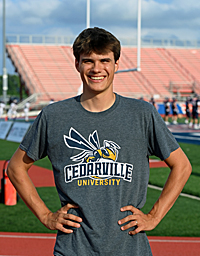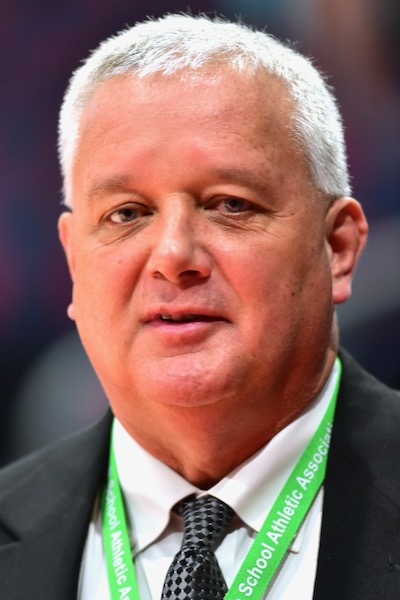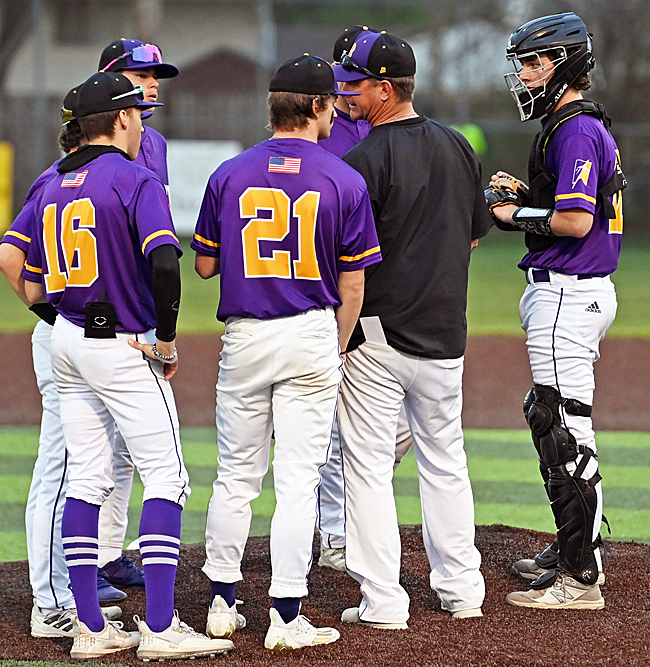If the OHSAA Board of Directors say yes next week, next school year will see an increase from four to seven divisions in basketball, volleyball, baseball and softball, plus an increase to five in soccer. Coaches in the Miami Valley League welcome the opportunity to move down from the top-heavy Division I.
By Alan Brads for Press Pros
 For over 10 years, high schools have been asking what is most fair for student-athletes. Next week the Ohio High School Athletic Association will vote on the answer.
For over 10 years, high schools have been asking what is most fair for student-athletes. Next week the Ohio High School Athletic Association will vote on the answer.
The OHSAA’s Board of Directors will cast their much-anticipated votes on February 15 whether or not to add tournament divisions to seven sports to address unbalanced enrollment distribution.
The proposal is highly likely to pass as many BOD members have publicly expressed support.

Alan Brads is a journalism student at Cedarville University, and writes sports at large for Press Pros.
 Under this proposal, boys and girls basketball, volleyball, softball and baseball will increase from four to seven divisions. Boys’ and girls’ soccer will go from three divisions to five. Notably, those numbers are not set in stone year-over-year, but just the results of how many schools currently compete in every sport.
Under this proposal, boys and girls basketball, volleyball, softball and baseball will increase from four to seven divisions. Boys’ and girls’ soccer will go from three divisions to five. Notably, those numbers are not set in stone year-over-year, but just the results of how many schools currently compete in every sport.
Click here to view projected divisional breakdowns for every sport should the proposal pass.
The new format targets the massive disparity in enrollment for Division I schools. In the current format, the smallest Division I schools in every sport have about 900 fewer students than Mason, Ohio’s largest high school.
The new format targets this top-heavy discrepancy by placing just 64 schools in each of the top two divisions in every sport, and distributing the rest of the schools equally among the rest of the divisions.
While schools of every size and division will feel the impact, the biggest change comes for current small Division I schools, which will now enter tournaments free of schools with 500-900 more students to pick from.

“We want to put our student-athletes in the same tournament environment that the schools would play in in their conferences in terms of enrollment numbers.” – OHSAA executive director Doug Ute
“We want to put our student-athletes in the same tournament environment that the schools would play in in their conferences in terms of enrollment numbers,” OHSAA executive director Doug Ute said.
Schools from conferences like the Miami Valley League won’t face schools from conferences like the GWOC, which expands their horizon of success.
Athletic directors, like many in the Miami Valley League, have been fighting for a level playing field for their athletes, some for over a decade according to Ute.
“This is member generated,” Ute said. “This change isn’t generated from our office. Members are what started this conversation, and they’re still driving it today.”
Sidney’s girls basketball team makes a prime example of the unbalanced postseason. A year ago they won the MVL with an 18-0 conference record, but got bounced in their second tournament game by Centerville, which has 614 more girls in their school than Sidney.
“For Sidney this is pretty big honestly,” head coach Jamal Foster said. “You pretty much change the ceiling of what you think you can accomplish come postseason.”
Projected as a medium-sized Division III team, Sidney’s new ceiling will extend far beyond the district games they’ve struggled to escape.
“A lot of teams work really hard in the preseason, regular season, almost all year round to be the best version of themselves toward the end of the season,” Foster said. “Putting together divisions that are reflective of schools’ sizes creates a more competitive system. This puts more optimism and belief into the postseason.”
The Yellow Jackets split another conference title this year with Butler, their third championship in a row. They have a first-round bye and will likely face Centerville again in their first tournament game, but this time with a confidence-inducing win over the Elks in January already secured.
Thirty miles south, Butler’s baseball team, the second smallest Division I baseball school in the state, makes for another ideal example.
They touted the best record in the MVL last year at 22-7, but when they met Springboro in their second tournament game, they fell to a school with more than double their enrollment.
Despite his lengthy history of success in his three-decades long career, coach Trent Dues’ program has made it to state just once, in 2000. That’s the only year of his career in which the Aviators competed in Division II rather than Division I.

Butler coach Trent Dues has had solid baseball for years at Vandalia, and wants change. “If anyone’s saying it’s filtered down, I think they’re coming from a bad place.”
“We’ve been praying for this,” Dues said. “Right now the worst situation you can be in is a small D1. Anywhere else are you ever gonna play a school that’s three times bigger than you?”
Not unless you only have 40 boys in your school.
Though Dues undeniably won the reshuffling lottery as Butler will become an average-sized Division 3 team, he believes this change does more than just help Butler win a few tournament games.
“It’s gonna promote these sports,” Dues said. “Anytime you have a tournament run it promotes spirit in your town and enthusiasm for your sport. You’re giving more schools excitement. All you’re doing is helping your sport.”
Though received by MVL teams as a blessing, statewide reception has been mixed.
“We have 818 member high schools, over 60k coaches and over 300k athletes,” Ute said. “Nothing is going to be 100% approval. Not everybody’s gonna agree with this. But one thing I always keep in mind is that this is about our student-athletes and what we think is fair to them.”
The most common complaint you’ll find plastered on social media comment sections is that this is all just a money-grab by the OHSAA. Ute, however, insists that the OHSAA expects a budget-neutral result. The total number of tournament games will not increase, technically it will slightly decrease. The number of tournament games will always equal the total number of teams minus the number of state champions. So whereas softball will have 726 postseason matchups this year, it would have 723 in 2025.
Others have complained that this “waters down the competition.” Don’t let Dues hear you say it.
“If people think there’s too many state champions, I think they’re crazy,” Dues said. “You’re still gonna have 120ish in a division. How many tournaments do you go to where there’s that many teams? Even the top two divisions have 64, that’s a March Madness. If you win that tournament, that’s a pretty good accomplishment. If you win a tournament of 130, that’s an amazing accomplishment. So anyone who’s saying it’s filtered down, I think they’re coming from a bad place.”
Ute said that the discussions were never centered around state titles, but more about giving schools of all sizes a fair shot to win a couple tournament games.
The most significant procedural change affects only the state semifinals. All sports affected by the proposal will adopt the pattern set by football and soccer, in which state semifinal teams are rebracketed by proximity, and state semifinals are held at a middle ground between the schools. Only state finals will be held in a central location for all divisions.
The “64+64+ the rest” model being voted on won out in a lengthy discussion about which model would best address the disparity. Other options included just one small division per sport, and a model that includes success as a driving factor for forming divisions. Enrollment and competitive balance, which deals with certain types of enrollment, not historical success, remain the only factors in placing teams in divisions.
Ute said while they focused on getting the rest of the competitive balance sports on par with football’s divisional breakdown, change could be on the way for individual sports as well.
The conversation that sparked this change started well over a decade ago between the OHSAA and its member schools. The same conversation for individual sports has been under way for nearly the same length of time.
But for the 2024-2025 school year, it’s time to buckle down for change. It’s coming whether you like it or not.
And as Trent Dues put it: “It’s a whole new ball game.”



